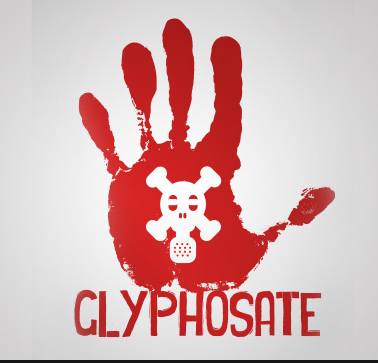
Glyphosate, an active ingredient in commercial herbicides, including the now infamous Roundup made by Monsanto, the chemical giant, has been on the radar of health officials for decades. It is used on numerous crops including sugar, corn, soy and wheat. In the 1990’s, regulators at the EPA determined that 1.75 mg per kg of body-weight per day is the safe level of intake. Glyphosate is listed on the EPA web site as a one of the regulated drinking water contaminants. The EPA also states that long-term exposure to Glyphosate at only 700 parts per billion (ppb) can cause kidney and reproductive problems.
Roundup’s glyphosate toxicity numbers:
0.5 ppb Roundup with 0.05 ppb glyphosate altered over 4,000 genes in kidneys and livers of rats [1]
0.1 ppb Roundup with 0.05 ppb glyphosate caused severe organ damage in rats [2]
0.1 ppb is the allowable level in drinking water in the European Union.[3]
700 ppb induces toxic liver and kidney effects in rats. [4]
700 ppb is the allowable level in drinking water in the U.S. [5]
–
Scientists studying environmental toxicity are looking very seriously at lowering the allowable levels considered toxic. One thing the EPA studies did not consider is the serious impact that glyphosate has on the human microbiome. One study found that glyphosate causes dysbiosis (an unhealthy shift towards harmful microorganisms in the gut). This in turn favors the production of botulinum neurotoxin formation. [6]
A recent analysis [7] of some of the most common cereals and snack foods found in most American’s pantries found shockingly high levels of glyphosate residues. The highest of all? Cheerios! Original Cheerios came in at a not-so-cheery 1,125.3 ppb (1.1253 mg/kg). Honey Nut Cheerios had a level of 670.2. Stacy’s Pita Chips- 812.53. Doritos Cool Ranch- 481.27. Lay’s Potato Chips- 452.71. Other foods listed include Oreos, Fritos, Corn Flakes, Raisin Bran, Goldfish and more. The testing and analysis was performed by Anresco Laboratories, located in San Francisco. They are an FDA registered laboratory that has performed expert food safety testing since 1943. You can download the test results from https://www.facebook.com/FoodDemocracyNow/photos/rpp.162878479387/10155521941024388/?type=3&theater
The amount of glyphosate containing herbicides has steadily grown over the years. According to a report by Global Industry Analysts Inc., the global glyphosate market is estimated to reach 1.35 million metric tons by 2017. Look at this interactive map showing the growth of the use of Roundup since 1992. http://static.ewg.org/agmag/glyphosate_map/index.html
An article published in the British medical journal Lancet Oncology May 16, 2015, called Carcinogenicity of tetrachlorvinphos, parathion, malathion, diazinon and glyphosate concluded that glyphosate is highly suspect as a cancer causer. From the article “Glyphosate is a broad-spectrum herbicide, currently with the highest production volumes of all herbicides. It is used in more than 750 different products for agriculture, forestry, urban, and home applications.” According to an environmental working group of the World Health Organization, glyphosate is probably cancer-causing to humans. [8]
[1] Environmental Health Journal 2015;14:70
[2] Environmental Science Europe 2014;26:14
[3] BMC Genomics 2015 Jan 31;16:32. PMID: 25636363
[4] Environmental Toxicological Pharmacology 2012;34:811–8
[5] https://www.epa.gov/ground-water-and-drinking-water/table-regulated-drinking-water-contaminants#Inorganic
[6] The influence of glyphosate on the microbiota and production of botulinum neurotoxin during ruminal fermentation. Current Microbiology March 2015
[7] https://s3.amazonaws.com/media.fooddemocracynow.org/images/FDN_Glyphosate_FoodTesting_Report_p2016.pdf
[8] https://www.scientificamerican.com/article/widely-used-herbicide-linked-to-cancer/